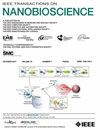Design and Analysis of MEMS Pressure Sensor Based on Various Principles of Microcantilever Beam
IF 3.7
4区 生物学
Q1 BIOCHEMICAL RESEARCH METHODS
引用次数: 0
Abstract
In this paper, we have used COMSOL Multiphysics for the design and simulation of three different micro cantilever configurations. These micro cantilevers are analyzed using finite element analysis (FEM) to understand their mechanical behavior, sensitivity, and non-linear characteristics. The goal of the research is to identify the most suitable micro cantilever design for integration with an electro-osmotic pressure sensor. This integrated system is intended to measure variations in glucose concentration levels with accuracy and efficiency, with potential applications in glucose monitoring and biomedical fields. The sensitivity of the microcantilever is reported as 0.10e-7. The stress value is given as 1.64. A change in resistance of基于微悬臂梁的各种原理设计和分析 MEMS 压力传感器。
在本文中,我们使用 COMSOL Multiphysics 对三种不同的微型悬臂配置进行了设计和仿真。我们使用有限元分析 (FEM) 对这些微型悬臂进行了分析,以了解它们的机械行为、灵敏度和非线性特性。研究的目标是确定最适合与电渗透压力传感器集成的微型悬臂设计。该集成系统旨在准确高效地测量葡萄糖浓度水平的变化,有望应用于葡萄糖监测和生物医学领域。据报告,微悬臂的灵敏度为 0.10e-7。应力值为 1.64。电阻变化为 0.00011 Ω-μm。报告的输出电压为 0.15 μV。该电压可能是由微悬臂根据电阻变化产生的,而电阻变化又是由葡萄糖浓度变化引起的。测量系数为 0.04。量规因子是应变计(本例中为微悬臂)灵敏度的量度,通常用于将机械应变(应力)与电阻变化联系起来。这些参数有助于深入了解基于微悬臂的葡萄糖传感器的性能及其检测葡萄糖浓度变化的能力。较小的输出电压表明需要灵敏的检测和测量设备才能有效利用该传感器。
本文章由计算机程序翻译,如有差异,请以英文原文为准。
求助全文
约1分钟内获得全文
求助全文
来源期刊

IEEE Transactions on NanoBioscience
工程技术-纳米科技
CiteScore
7.00
自引率
5.10%
发文量
197
审稿时长
>12 weeks
期刊介绍:
The IEEE Transactions on NanoBioscience reports on original, innovative and interdisciplinary work on all aspects of molecular systems, cellular systems, and tissues (including molecular electronics). Topics covered in the journal focus on a broad spectrum of aspects, both on foundations and on applications. Specifically, methods and techniques, experimental aspects, design and implementation, instrumentation and laboratory equipment, clinical aspects, hardware and software data acquisition and analysis and computer based modelling are covered (based on traditional or high performance computing - parallel computers or computer networks).
 求助内容:
求助内容: 应助结果提醒方式:
应助结果提醒方式:


